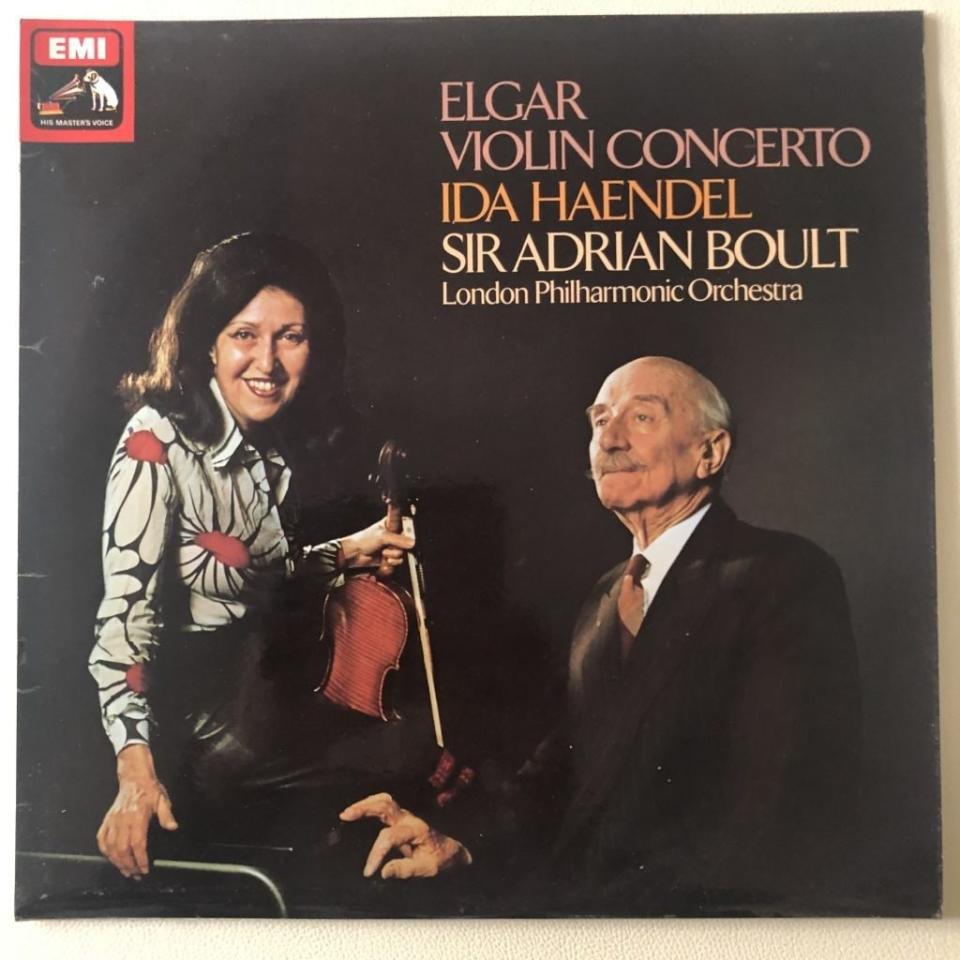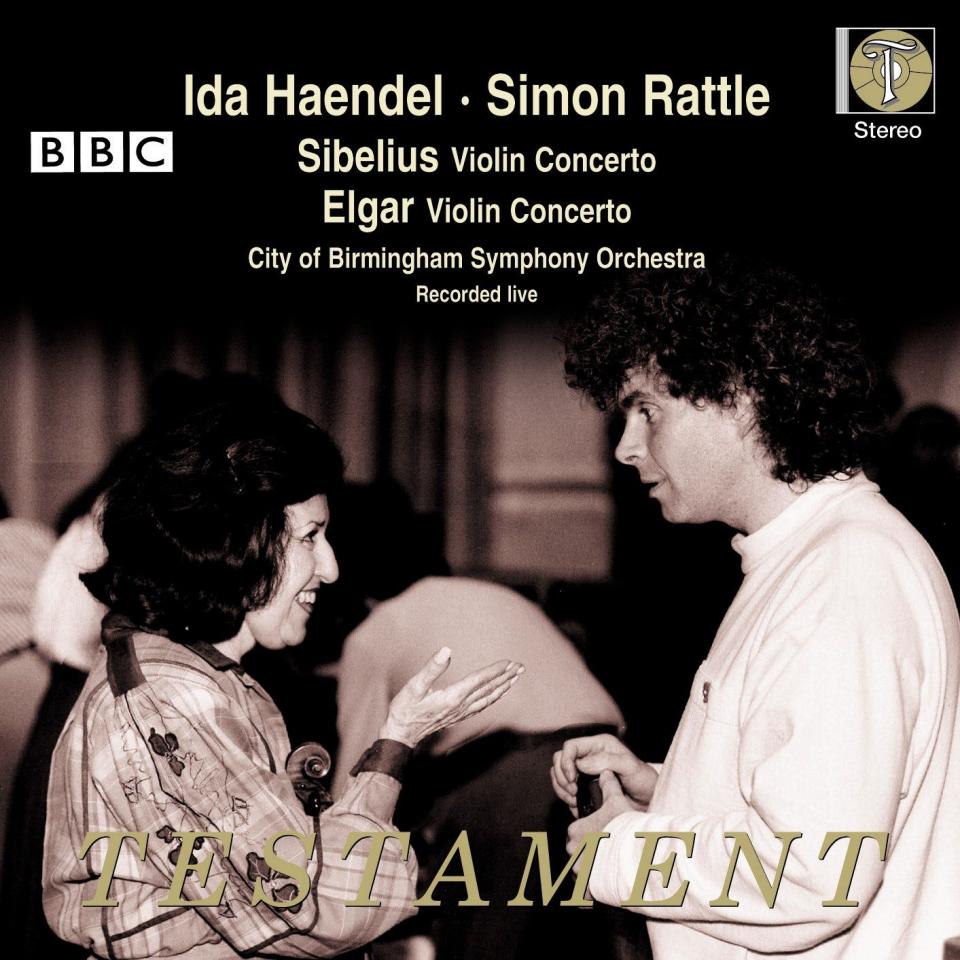Ida Haendel, violinist who played at the Proms before the Second World War – obituary

Ida Haendel, the violinist, who has died aged probably 95, was a child prodigy who played with Sir Henry Wood at the Proms before the Second World War; she went on to build a career of some distinction yet, despite her undoubted abilities, she never quite achieved the public recognition enjoyed by contemporaries such as Yehudi Menuhin and Isaac Stern.
The great Romantic works – Beethoven, Brahms, Mendelssohn – were her staple repertoire; and regardless of her diminutive stature she brought to them great power and emotional depth in performances that were both full-blooded and fearless.
Never was this more true than when working with conductors such as Rafael Kubelik or Sergiu Celibidache, with whom she enjoyed an intense bond.
She was the first soloist to appear with the nascent Palestine Philharmonic Orchestra after the war, riding in a bus as it was riddled with bullets. She also gave the premieres of violin concertos by Luigi Dallapiccola (“Scary,” she recalled) and Allan Pettersson (“Very difficult … but what’s the point of doing things that are easy?”).
In 1949 Sibelius, on hearing her interpretation of his concerto, wrote to her that she “played it masterfully in every respect”, adding: “I congratulate myself that my concerto has found an interpreter of your rare standard.”
The over-bearing – almost suffocating – presence of her father in her life, even as she approached middle age, was a source of protection and at the same time a hindrance, though “Idunia”, as he called her, would never heard a word against him.

She also encountered her fair share of misogyny and bad luck – her record producer David Bicknell marrying the smouldering violinist Gioconda de Vito, for example. Her decision to follow her parents when they emigrated to Montreal did her few favours either.
Ida Haendel (or her father) could also be difficult to work with, eschewing promotional opportunities, pulling out of engagements if she suspected a slight on her character and railing against many who offered her hospitality, such as wartime London and postwar Israel.
Her premature autobiography Woman With Violin, published in 1970, is a litany of complaints as well as heartbreak as she is constantly mesmerised – and then rejected, musically at least – by Celibidache who was married to his Buddhism, his music and his wife. That she endured at all is testament to her musical genius, the determination of a handful of die-hard aficionados and the hard work of a succession of managers.

She was born Ida Hendel in Chelm, eastern Poland, on December 15 1924, changing her surname to Haendel once in England.
Years later she would claim that her true date of birth was 1928 and that she had only made herself older in 1939 to circumvent child labour regulations in London. However, a recently unearthed Times review of her debut at Queen’s Hall, dated December 21 1936, gave the lie to this by declaring the “juvenile violinist” to be “12 years of age”, adding that her playing had “the charm of an unsophisticated attitude towards the music”.
Little more than two years later the paper had revised its opinion: “Unlike many child prodigies she has a future.”

Her father Nathan had wanted to be a violinist, but his father would have none of it; as a result Nathan – who became a struggling portrait artist – vowed that any child of his with musical talent would be encouraged.
Ida’s elder sister, Alice, was supposed to be the violinist, but when Ida was three she heard her mother, Fela, singing in the kitchen, picked up her sister’s violin and imitated the song perfectly.
By the time she was seven Nathan had moved the family to a tiny one-room flat in Warsaw and young Ida was studying with Mieczyslaw Michalowicz. She won the Huberman prize (named after the Polish violinist Bronislaw Huberman) at a local competition, inspiring her father, with a grant from the philanthropic B’nai Brith organisation, to seek out Joseph Szigeti in Paris.

To their dismay the Hungarian virtuoso was preoccupied with a forthcoming visit to the United States, so father and daughter instead made contact with Carl Flesch, who was by this stage in London. Among his other students at the time were Ginette Neveu, who died in a plane crash in 1949, and Josef Hassid, who suffered from schizophrenia and also died at an early age, both of whom the young Ida was close to.
It was Flesch who spotted that Ida Haendel could not read music and was playing by ear. “I did not know about bars and pauses and all these dots,” she later confessed. Asked 70 years later if she could now read music, Ida Haendel replied enigmatically: “We never finish learning.”
On one occasion she visited George Enescu, the Romanian pedagogue, in Paris, seeking his ideas on interpretation. It was a move that infuriated Flesch, but he mellowed sufficiently to prepare her for the Wieniawski Competition in 1935 (she was seventh; Neveu was first and David Oistrakh second) and her first Proms appearances with Henry Wood at the Queen’s Hall playing the Beethoven Concerto in 1937 and the Brahms the following year. Her scheduled Mendelssohn in September 1939 was cancelled after the outbreak of war.

By now Ida Handel had been joined in London by her mother and sister, sparing the immediate family the horrors of the Holocaust. She played for British troops, took part in Myra Hess’s concerts at the National Gallery, appeared on several occasions in every subsequent wartime Proms season and made a collection of now historic recordings for Decca.
But before long, she noted in her memoir, “England … was toasting other violinists”, adding petulantly: “I was determined not to play there until I had my way, the right concerts and the right fees.”
Even in Montreal, to where the family moved in 1952, she felt persecuted. According to her telling she wrote to Jean Chrétien, the Canadian Prime Minister, in the 1990s urging him to save the National Arts Centre Orchestra in Ottawa, only to see Pinchas Zuckerman appointed music director when its survival was assured. “No good deed goes unpunished,” she complained.
Meanwhile Ida Handel appeared with a range of English conductors including Malcolm Sargent, Basil Cameron (“I felt safe with Basil”) and Simon Rattle, while the pianists she rated as her favourite accompanists were Martha Argerich, Moura Lympany and Clara Haskil.
Undoubtedly her favourite conductor was Celibidache, whom she first encountered in Mexico in the late 1940s and pursued around the musical world. “Little did I forsee the formidable influence he would exercise upon me, as if in punishment for daring to ignore him,” she wrote in her memoir recalling how she had earlier missed his first London engagement.
Described by John Drummond as “eternally ageless”, Ida Handel became an almost annual fixture at the Proms for half a century, with Beethoven, Brahms and Elgar being her most performed works. In 1989 she played Saint-Saëns at the Last Night under the baton of the ailing John Pritchard, and in 1994, the hundredth season, she played the Britten Concerto for the Queen’s first visit to the Proms.
In later years she performed the Beethoven Triple Concerto with the cellist Steven Isserlis and Martha Argerich, while a recording of Enescu’s Sonata accompanied by Vladimir Ashkenazy, widely praised by the critics, was not to her satisfaction. “I am not there to please the audience,” she told Norman Lebrecht in 2000. “I am not an entertainer. I am there to serve the composer.”
Her father died in 1987, whereupon Ida Haendel finally broke her family ties and moved to Miami. By the 21st century she had become the doyenne of violinists, her counsel sought by child prodigies and established artists alike, although she professed to a dislike of formal teaching. “I don’t want to impose my opinion on other performers,” she insisted.
She made a belated Wigmore Hall debut in 2000 and played at a National Gallery tribute to Myra Hess a decade later. But she was now almost forgotten by the public at large: an on-stage discussion with Steven Isserlis at the Wigmore Hall in February 2012 drew only a small audience of die-hard fans.
She recalled then how she had recently played with Isserlis in the US and afterwards, struggling to find a meal, they had ended up in a 24-hour diner. Surrounded by “bikers and drunk students” she took out her instrument and played the Schumann Sonata in D minor.
Despite requests from admirers, Ida Haendel – whose hair was almost as big as she was and who often performed in bright, gipsy-like clothing – never did pen a second, more measured volume of memoirs, leaving her account of the last 50 or so years of her life largely undocumented. Celibidache died in 1996, and she vowed to take the exact nature of her relationship with the reclusive maestro to her grave.
Ida Haendel, who was appointed CBE in 1991, never married.
Ida Haendel, born December 15 1924, died June 30 2020


